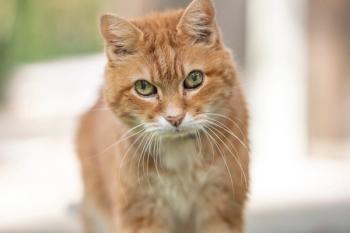
Leading Off: Fluid therapy strategies: New guidelines for dogs and cats
This comprehensive set of guidelines is a must-read and should receive a place in your library for training and regular reference.
Fluid administration is an important medical therapy used in veterinary practices. This past year, the American Animal Hospital Association (AAHA) and the American Association of Feline Practitioners (AAFP) convened a task force of veterinary and technician specialists with expertise in critical care, anesthesiology, and canine and feline practice to review the literature and draft guidelines for fluid administration to dogs and cats. This comprehensive set of guidelines is a must-read document for veterinarians and technicians and should receive a place in your library for training and regular reference.
Heidi L. Shafford, DVM, PhD, DACVAA
The goal of the fluid therapy guidelines is to provide practical recommendations for fluid choice, rate, and route of administration for anesthetized patients and patients with fluid disturbances. The focus is on administration of crystalloids and colloids; while important, blood products are not addressed in this set of guidelines. The text is complemented with tables highlighting key points such as parameters for assessing patient response to fluid therapy and fluid rates for maintenance and anesthesia.
Anesthetized patients
The benefits of providing fluids during anesthesia are many and include
- The opportunity to ensure a patent intravenous catheter
- An ability to counter negative physiologic effects of anesthetic agents
- An ability to correct ongoing fluid losses.
PHOTO BY GREGORY KINDRED
Fluid overload is the primary potential risk of fluid therapy in an anesthetized patient. Veterinary and human research strongly suggests that the current practice of administering crystalloid fluids at a rate of 10 ml/kg/hr is a relatively high fluid rate and has potential to harm patients. Review of current and past research compelled the task force to recommend lower anesthetic fluid rates, particularly in cats because of their smaller blood volume and increased risk of fluid overload.
Patients with fluid disturbances
A major section of the guidelines is devoted to treatment recommendations for a variety of fluid disorders. Here clinicians will find fluid disorders divided into three categories based on whether the disorder causes changes in fluid volume, fluid content, or fluid distribution. These categories may be a new way of thinking about illnesses affecting fluid status, but the broad categories are easy to use, and recommendations should facilitate individualized therapy.
A complete resource
To assist with adoption of the new guidelines, the document has sections on staff training, protocols, and procedures for intravenous catheter maintenance and fluid administration. Also look for timely tips and myth busters in a table titled "Relearning what you thought you knew."
Thus, the AAHA/AAFP Fluid Therapy Guidelines for Dogs and Cats should serve as a concise and easy to understand resource that will help veterinary teams provide individualized fluid therapy to cats and dogs. We encourage you to download the guidelines—available at
Heidi L. Shafford, DVM, PhD, DACVAA, is president of Veterinary Anesthesia Specialists, LLC, in Portland, Ore. She was co-chair of the fluid therapy guidelines task force.
Newsletter
From exam room tips to practice management insights, get trusted veterinary news delivered straight to your inbox—subscribe to dvm360.





